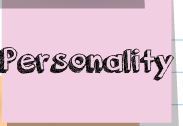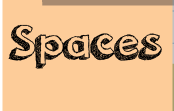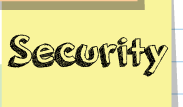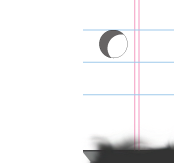 |
| A view of our comfortable, soft, attractive, calming Writing Center. |
Writing center directors spend a great deal of time and effort creating learning environments. These environments exist within the university space, but they are often positioned as different because we wish to move away from the institutional nature of the typical learning environment. Center directors value space that is comfortable and inviting, though that relationship is not necessarily unproblematic, as Jackie Grutsch McKinney (2005) pointed out in “Leaving Home Sweet Home: Towards Critical Readings of Writing Center Spaces.” She addressed the predominant metaphor of writing centers as “home,” listing adjectives commonly used by writing center professionals to describe their ideal writing centers: “soft, calming, welcoming, comfortable, attractive, familiar, non-threatening, and friendly” (p. 8). Grutsch McKinney (2005) pointed out that historically,
[p]rofessionals in the field created friendly centers, or what they imagined were friendly centers, for conscious reasons—they did not want to be that other, scary, institutional lab for remedial students, they wanted students to feel welcome, and they felt like one big family. Writing centers wanted to assure students that nothing harmful would be done to them upon entering. (p. 9)
Directors wanted to cultivate trust by creating space that appeared to be non-threatening. This sounds like a nice ideal, but Grutsch McKinney pointed out some problems with the notion of writing centers as “home.” First, she challenged the belief that we can create static spaces: interpretable in only one way. What we view as homey, someone else may view very differently. She noted Nedra Reynolds’ emphasis on critical geographies: paying attention to the connection between the spaces we create and the practices we enact in these spaces (Grutsch McKinney, 2005, p. 15). “In terms of the writing center, critical geographies would not merely state what objects occupy the space. . . . [they] would include the human experience in use of space and objects” (p. 11). From this we can discern the principle that space should be viewed not only as the mediator of the experiences of those who spend time there, but also as mediated by its inhabitants as well.
After urging us to think about the dynamic nature of space, Grutsch McKinney (2005) then addressed the notion of safety, arguing that writing centers can and should be uncomfortable enough to “make students revise, confront their shortcomings, formulate questions, engage in their work, be active, and think” (p. 18). Safety is complicated. Perhaps a better way to articulate this goal would be that we wish to create spaces that invite writers to enter and participate in on-going critical inquiry. That participation may be intellectually uncomfortable or challenging, but participants must feel that engaging in it will be encouraged and protected.
Anne Ellen Geller et al. (2007) described a different but not incompatible view of space in The Everyday Writing Center:
Walk with us now through another doorway, this time not into the physical space of the writing center, but into the mythical space of Trickster. Doorways represent, in fact, crossroads for Trickster figures, sites of contingency and leakage. . . . We like to think of our writing centers as places where deep-change accidents occur, of the doorways to our writing centers as something other than the familiar gate-keeping devices. (p. 15)
This view of space encourages us to think about the space of possibility, space that allows everyday “deep-change accidents” to happen. If we wish to encourage the magic of transformation, we need to adopt some of the virtues of the Trickster, a figure who blurs boundaries and moves between worlds.
To summarize, an ideally created space would acknowledge the way that human interaction mediates and is mediated by that space, it would encourage critical inquiry that is promoted and protected, and it would incorporate the accidental possibilities afforded by a sense of contingency and playfulness. That space would create a balance between trust and threat, challenge and play.
All of these principles can be translated to virtual space. We will explain how we arrived at the unique virtual space in our Center by talking about how we studied research on Virtual Space, translated what we learned to Experimental Space, and then arrived at Susie Space.

























